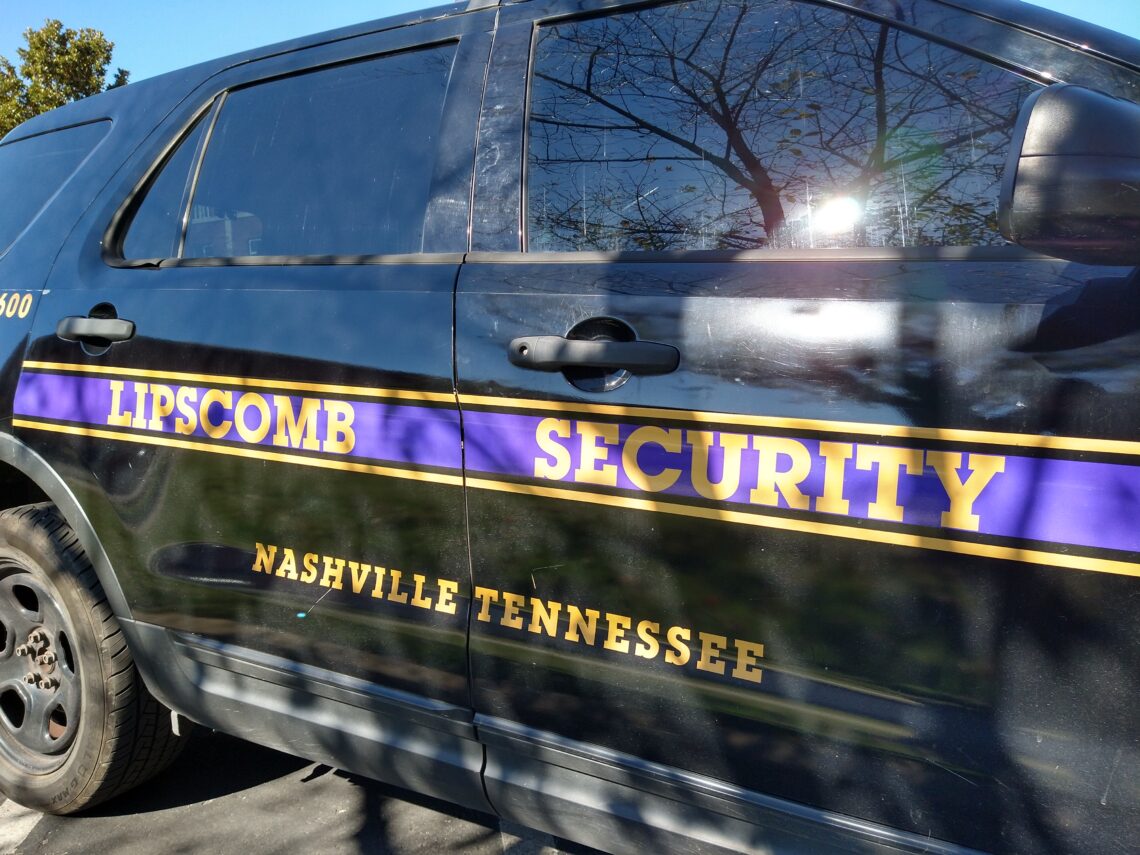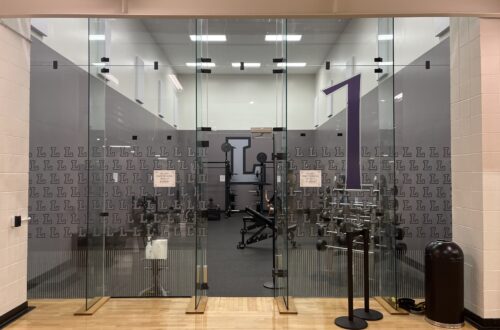
Layered protection: Lipscomb’s new ID guidelines aim to boost safety
Lipscomb University is introducing a new ID protocol starting in January to enhance campus safety and security.
Under the updated guidelines, all students, faculty and staff must visibly wear their official Lipscomb photo ID while on campus, with additional measures for building access after hours.
On Monday the bi-weekly McQueen’s Memo contained the announcement of the new security protocol. Lipscomb ID’s must be visible, and access to academic buildings will be limited to key card access past 10 p.m.
Chief of Lipscomb Security Mark Shafer, who was appointed in August, said this is just a part of a multilayer protection plan.
“We’re concerned in the security department with protection, of course, but also prevention,” Shafer said. “And to do that, we employ a layered strategy: Deterrence, access control, detection and identification.”
Shafer said deterrence includes things like the lighting and the fences — “anything to make it inconvenient or discourage someone from entering into an area where they really don’t have a purpose to be. Access control, that would be like the magnetic locks that are being installed around campus.”
The final layers are detection and identification, which rely heavily on the community.
“Detection, that’s where students, faculty and staff come in,” Shafer said. “We have a great team, but we can’t be everywhere at all times.
“And then, of course, the identification of that person, which is where this new protocol would come in. So within that integrative approach, this protocol is just one more tripwire for us.”
Shafer emphasized the importance of trying to balance security and campus life.
“Risk mitigation is a process, and we’re constantly evaluating, trying to do better to see where we could do better,” he said. “But we want students to go about campus, their learning environment, without worrying about someone or an issue. And we want to provide that environment a lot behind the scenes.”
A concern that has risen among students is the potential for identity theft of Lipscomb student identification numbers, also known as L-numbers.
Shafer said he does not consider that to be a problem.
“I do not believe just having an L-number alone one could access anyone’s account or incur any expenses on one’s account just by having an L-number,” he said.
Every new protocol requires ongoing discussions, acknowledged interim Executive Vice President Brian Mast.
“I think we’re always up for discussion and looking at different protocols to make student safety first and foremost priority,” Mast said. “So there will be more ongoing discussions around this as we move forward. Obviously, this being a soft rollout, we’re wanting to kind of see how this goes through this semester, and that gives us a little bit of time just to react and move forward into January.”
Does the new protocol close campus to the public?
According to Kim Chaudoin, Lipscomb’s vice president of communications and marketing, the campus will remain open to the public. Encouraging neighbors from the community to continue enjoying campus as they do — walking their pets and walking through campus, attending events and visiting Starbucks and other eateries in Bennett — remains a priority for Lipscomb.
Shafer said he is grateful for the administration in its support of the new protocol.
“We have a great team, but we can’t be everywhere on campus,” Shafer said. “And we rely on people reporting issues, and then from that, we can act. And I’m just grateful that the administration emphasizes the safety and security of the department and is supportive of this protocol.”
A soft launch was planned for Wednesday of this week with the protocol taking full effect this spring.
When talking to students around campus, Herd Media heard exclusively negative reactions. Several students said they thought the new policy was patronizing.
“This is probably one of the stupidest policies – it feels like they’re treating us like elementary schoolers,” said junior management and marketing double-major Jude Henderson.
“I believe that this little lanyard thing is over the top,” said senior finance major Francois Joubran. “We are students, not pets. We are adults, we’re not children, and this is a college campus. There are going to be people on it who are not from here.”
“I just feel like we’re not in middle school and this whole thing is very just patronizing to us,” said senior journalism and new media major Jacob Pettit. “It makes us feel like we’re not mature adults. They’re acting like we’re children.”
Some students questioned the policy’s effectiveness.
“I just think it’s stupid,” said junior public relations major Chloe Frensley. “I don’t think it’s going to help anything… What is this gonna change, and what is it gonna do? Because at the end of the day, we don’t care, and security doesn’t care.”
“I don’t see how it helps,” said junior biology major Mike Sisaye. “I think for students to be more accepting of the rule there needs to be more transparency from the department. It still doesn’t seem clear to me how this issue helps… I’m not sure how this plays a part [in security]. Personally, I don’t like the rule. I don’t see why it’s needed.”
“I really would like to know the actual behind why they’re implementing new safety protocols, for one thing,” said sophomore music education major Bentley Lankford. “If we haven’t had issues yet about safety, I don’t think [this] is really necessary. I don’t care to wear it – I think it’s dumb to wear it, only ’cause it’s an inconvenience for most people.”
Other students said they desired more rationale about the policy.
“I just want to know what prompted this, what is this solving and where is this coming from?” said junior public relations major Ashlen Jones.
“I just would like to know why we’re made to do this and whether we’re going to be supplied with the [lanyards],” said senior journalism and new media major Anastasia Boldyreva. “I want to know why they’re making me do this.”
“Honestly, my thoughts on it is it’s kind of ridiculous, especially when they’re not explaining why this is suddenly necessary or how this is gonna be helpful,” said junior public relations major Maggie Burke.
“I just wish we had a little more information on why, because it kind of feels out of the blue and it feels kind of childish, to have to wear a lanyard,” said sophomore public relations major Catherine Scott.
Additional reporting by Micah Barkley.






